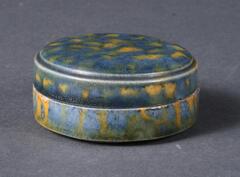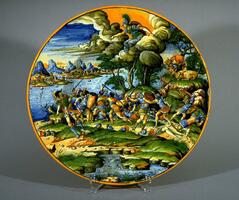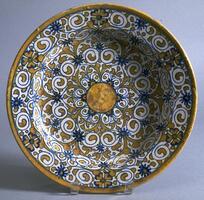21 UMMA Objects
21 UMMA Objects
![This dish features a three part structural division; the boss is almost flat. Around the depressed area is a band of degenerate Gothic [or pseudo-Arabic] script. On the brim are solid lustre painted zig-zags, possibly a late version of gadroons. The empty areas of this pattern are filled with dots and floral motifs. The reverse has repeated circles only. This dish features a three part structural division; the boss is almost flat. Around the depressed area is a band of degenerate Gothic [or pseudo-Arabic] script. On the brim are solid lustre painted zig-zags, possibly a late version of gadroons. The empty areas of this pattern are filled with dots and floral motifs. The reverse has repeated circles only.](/media/W1siZiIsIjIwMjIvMDUvMjUvNHVtdXlvNGgwcF9kZWZhdWx0LmpwZyJdLFsicCIsInRodW1iIiwiMjQweDIwMCJdXQ?sha=4c312278c29b047b)
Moorish (Moorish)
Shallow Dish
16th century
Transfer from the College of Architecture and Design
1972/2.119

Nicola da Urbino
Dish (Tondino) with portrait of a young woman and grotesque decoration
1526
Museum Purchase
1965/2.79
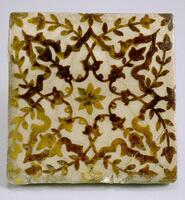
Transfer from the School of Art and the College of Architecture and Urban Planning.
1997/1.263A&B
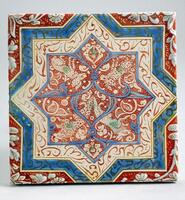
Iranian (Iranian)
Tile
20th century
Transfer from the School of Art and the College of Architecture and Urban Planning.
1997/1.257
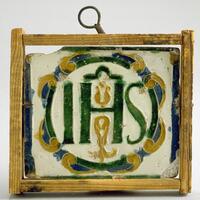
17th century
Transfer from the School of Art and the College of Architecture and Urban Planning
1997/1.254

Moorish (Moorish)
Dish with Floral Motifs
17th century
Transfer from the College of Architecture and Design
1972/2.120
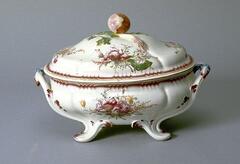
French (French (culture or style))
Tureen with floral patterns and glass knob
1745 – 1755
The Paul Leroy Grigaut Memorial Collection
1969/2.41
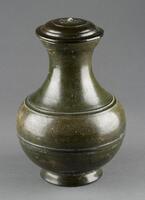
Chinese (Chinese (culture or style))
Covered Jar
206 BCE – 220 CE
Gift of Mrs. Henry Jewett Greene for The Mr. and Mrs. Henry Jewett Greene Memorial Collection
1971/2.69
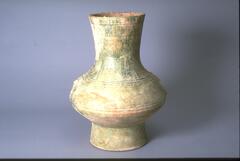
Chinese (Chinese (culture or style))
Jar
206 BCE – 220 CE
Museum purchase for the James Marshall Plumer Memorial Collection
1964/2.67
Loading…
